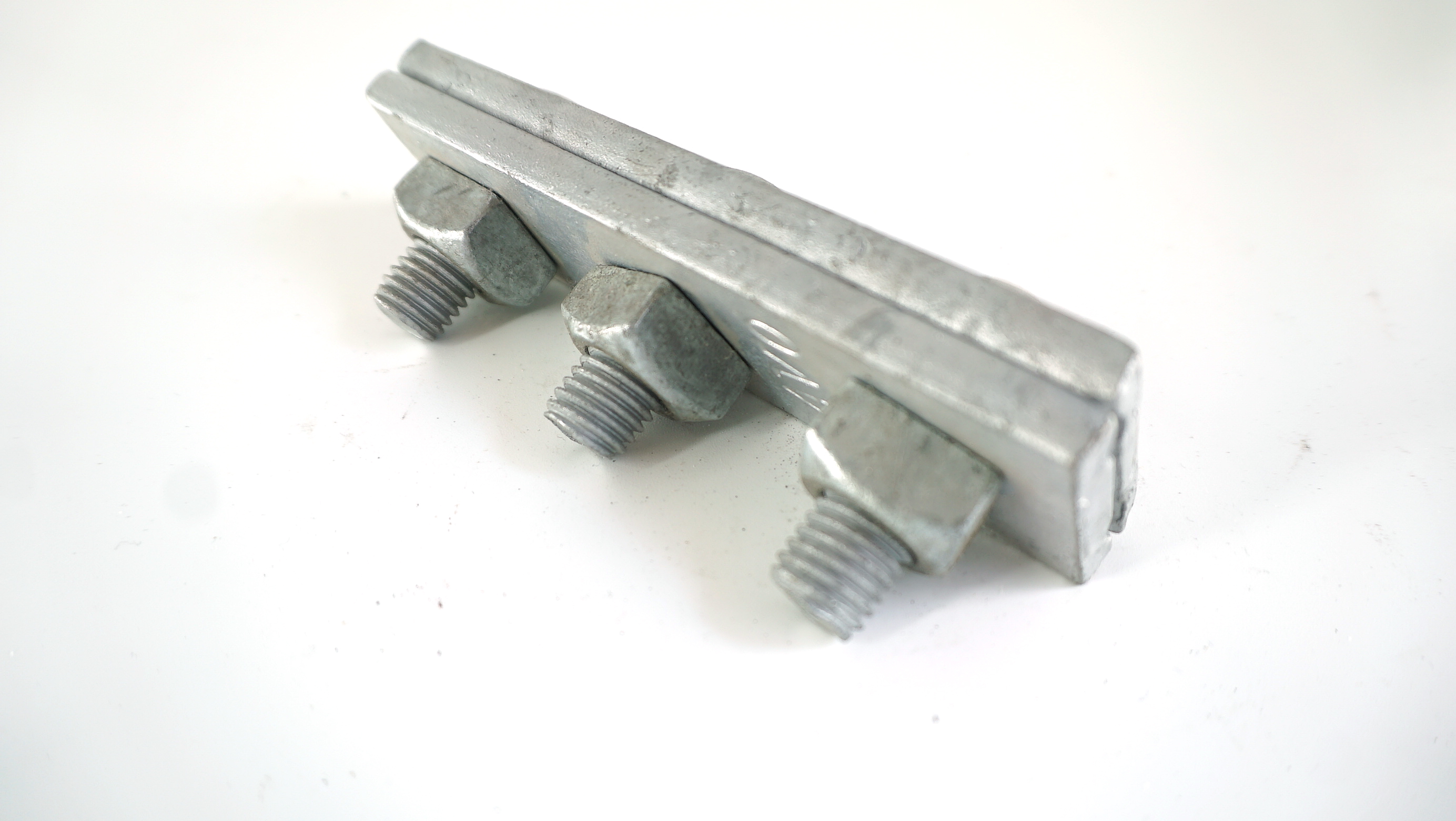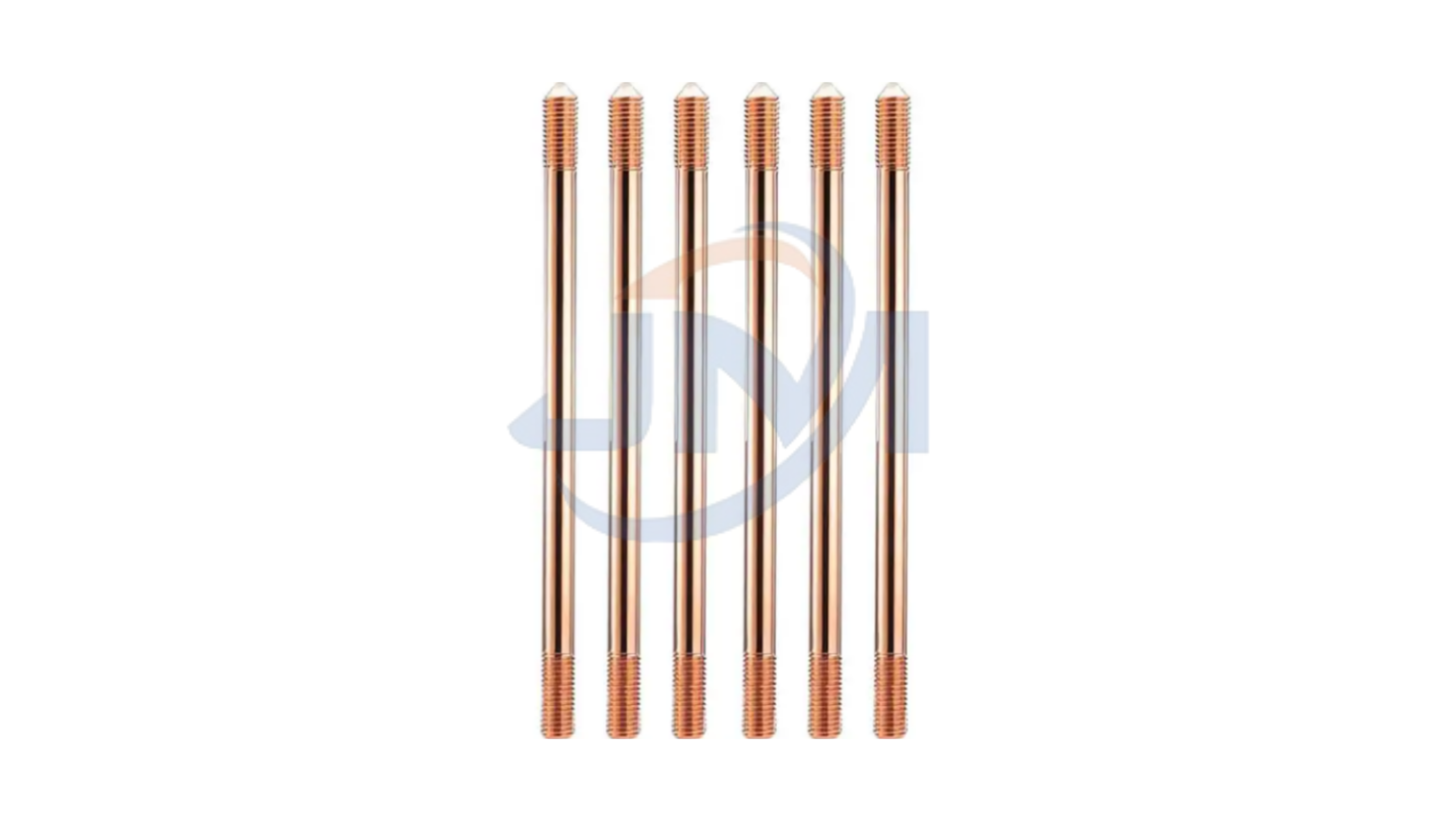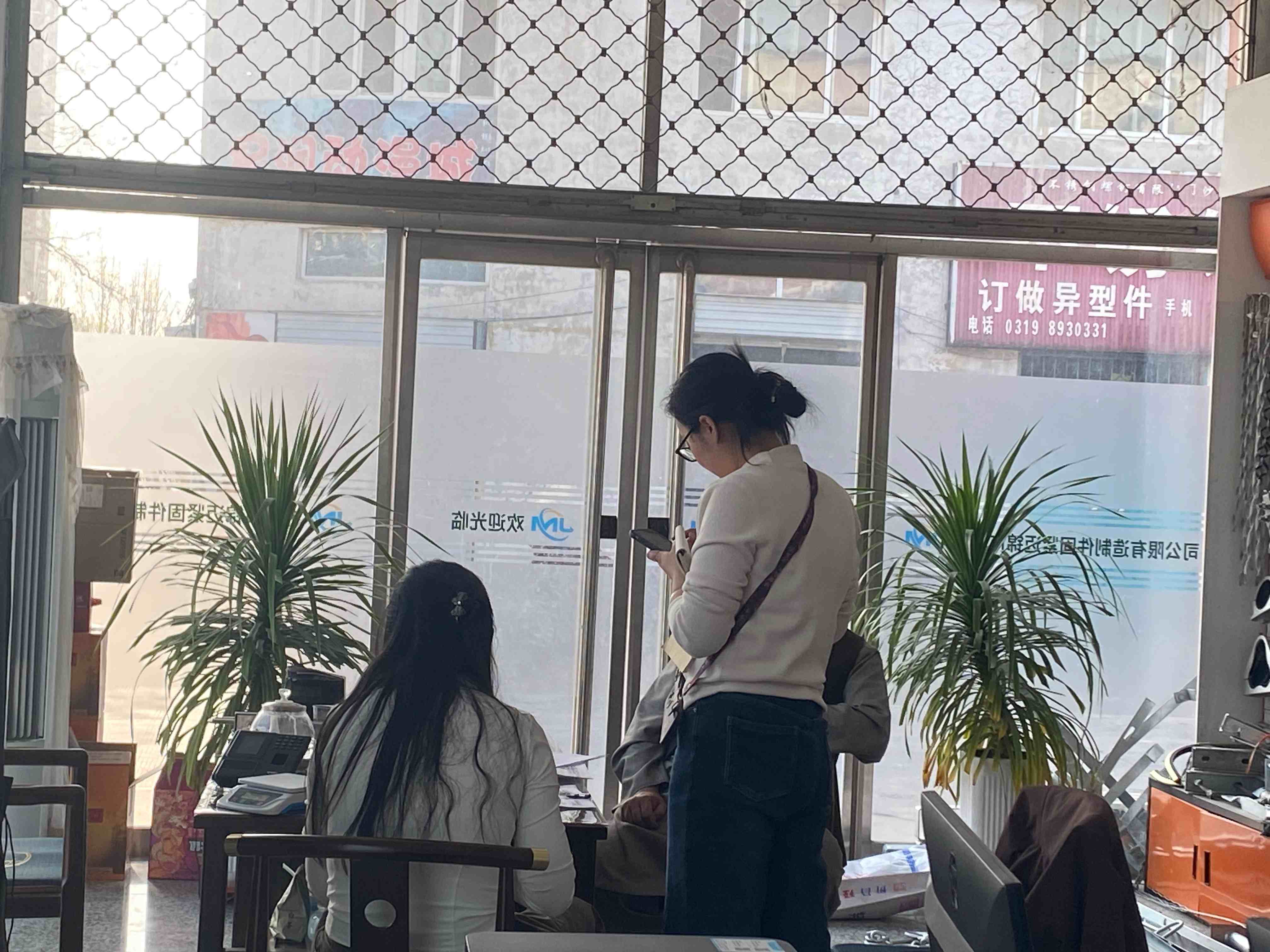Welcome to Handan Jinmai Power Line Accessories Manufacturing Co., Ltd.

Anchor Rod
- Real manufacturers welcome on-site factory inspections.
- Professional customer service team to solve difficult problems for you.
- Processing and customization based on drawings, tailor-made for you.
Anchor Rod: The Complete Guide
The Anchor Rod is a critical component in the construction and maintenance of pole line infrastructure, offering unparalleled support and stability to overhead line systems. As a key product from Jinmai Fastener, the Anchor Rod is designed to be embedded in concrete foundations, providing robust support to utility poles and ensuring the integrity of the pole line system.
| Material | Steel |
| Application | Overhead Line Accessories |
| Surface treatment | Hot Dip Galvanised |
| Size | Customized Size |
| Brand | JinMai |
| Packing | Wooden box/or woven bag + pallet |
| Sample | Provide Samples |
| Certificate | ISO9001 |
| Origin | China |
What is an anchor rod?
Anchor Rod is a common power line fitting. It is a metal accessory used to connect insulator strings or suspended wires. Used to fix and connect other accessories.
The main features and functions of the anchor Rod include:
Connection function: Anchor Rods are usually used to connect insulator strings or wires to support and fix power lines.
Structural design: The design of anchor Rod allows it to be easily connected with other hardware such as hanging boards, pendant hardware, etc. to form a stable suspension system.
Materials and Manufacturing: Anchor Rod are usually made of weather-resistant metal materials, such as carbon steel or stainless steel, to ensure durability and corrosion resistance in various climate conditions.
Installation and maintenance: Anchor Rod is easy to install and maintain, which helps to improve the operating efficiency and safety of power lines.
Scope of application: It is widely used in transmission lines, distribution lines and other occasions where suspended conductors are required.
Anchor Rod is an important part of the power line hardware. Its design and manufacturing quality directly affect the stability and safety of the power line. When selecting and using a Anchor Rod, you need to consider its load-bearing capacity, applicable environment, and compatibility with other components of the line.

anchor rod
Function and introduction of anchor rod
The primary function of an anchor rod is to secure the base of utility poles, ensuring they remain stable and upright. They are embedded within concrete foundations and are used to anchor the poles against various forces such as wind, ice, and the weight of the electrical lines and equipment.
Design and Construction:
Anchor rods are typically made from durable materials such as carbon steel, which offers high strength and resistance to environmental factors like corrosion and rust. They are designed to be long, cylindrical rods with threads at one end, which can be either screw or nut-type. The threaded end is embedded into the concrete foundation, while the other end is often fitted with a thimble eye nut or a similar attachment point for guy wires or stay wires.
Installation Process:
During the installation of a pole line, anchor rods are placed into pre-drilled holes within the concrete foundation. The concrete is then poured around the rods, ensuring a secure bond. Once the concrete has cured, the anchor rods provide a solid point of attachment for the utility poles and the overhead lines.
Role in Pole Line Stability:
Anchor rods play a crucial role in the overall stability of a pole line system.
Distribute Loads:
Anchor rods help to evenly distribute the weight and tension from the overhead lines and equipment to the concrete foundation, preventing the pole from tilting or shifting.
Resist Environmental Forces:
By anchoring the poles firmly to the ground, anchor rods help to resist forces such as wind and ice, which can cause poles to sway or even collapse.
Ensure Longevity:
The robust construction of anchor rods, combined with protective coatings like hot-dip galvanizing, ensures that they provide long-lasting support for the pole line infrastructure.

anchor rod
Types Of anchor rod

anchor rod
Anchor rods, as crucial components in the stability and support of pole line infrastructure, come in various types, each designed to cater to specific applications and conditions.
Threaded Anchor Rods:
These anchor rods feature threads along their entire length or at one end, allowing them to be screwed directly into the concrete foundation. Threaded anchor rods are commonly used when the rod needs to be adjusted or removed after the concrete has cured.
Bolt-Type Anchor Rods:
Bolt-type anchor rods typically have a nut and washer at one end, which can be tightened against the base of the pole or other structure. This type is often used for applications where the anchor rod may need to be adjusted or replaced.
Guy Anchor Rods:
Guy anchor rods are specifically designed for use with guy wires to provide additional lateral support to utility poles. They are typically installed at an angle and are anchored deep into the ground or within a concrete foundation to counteract the forces exerted by the guy wires.
Dead-End Anchor Rods:
Dead-end anchor rods are used in situations where the pole line terminates, and there is no continuation of the line on the opposite side of the pole. These rods are designed to provide additional support and stability at the end of a pole line run.
Tensioned Anchor Rods:
These rods are used in applications where the tension in the guy wires needs to be regularly adjusted or where the pole line experiences dynamic loads. Tensioned anchor rods often come with specialized hardware to allow for adjustments in tension.
Pre-Stressed Anchor Rods:
Pre-stressed anchor rods are designed to be tensioned before they are embedded in the concrete foundation. This pre-tensioning helps to improve the overall stability of the pole and the pole line system.
Ground Anchor Rods:
Ground anchor rods are used for applications where the anchor rod is not embedded in a concrete foundation but is instead used to secure structures directly to the ground, often used in temporary or portable installations.
Each type of anchor rod is chosen based on the specific requirements of the pole line project, including factors such as the expected loads, environmental conditions, ease of installation, and maintenance considerations. Manufacturers like Jinmai Fastener offer a wide range of anchor rods to meet the diverse needs of the utility industry.


Why Choose Quality Anchor Rods
The technical specifications of U Bolts are essential for ensuring they meet the requirements of their intended applications. Here are the key specifications to consider:
Material: U Bolts are typically made from carbon steel, stainless steel, or other metals that offer the necessary strength and durability. The material choice affects the bolt's resistance to corrosion, its ability to withstand environmental conditions, and its overall strength.
Diameter: The diameter of the U Bolt is crucial for determining its load-bearing capacity. Common diameters include 1/2 inch, 5/8 inch, 3/4 inch, and larger sizes, depending on the application's needs.
Thread Size and Pitch: The thread size and pitch (the distance between threads) are critical for the bolt's ability to grip and secure the materials it is fastening. Threads can be coarse or fine, and the specification should match the requirements of the installation.
Length: The overall length of the U Bolt, including the legs and the U-shaped body, must be appropriate for the application. This ensures that the bolt can properly engage with the materials and provide a secure fit.
Thread Length: The length of the threaded portion of the U Bolt is important for ensuring adequate engagement with the nuts and the materials being fastened.
Coating: Many U Bolts undergo a surface treatment such as hot-dip galvanization, which provides a protective coating against corrosion. This is particularly important for outdoor applications or in environments where moisture is present.
Load Capacity: The load capacity of a U Bolt is determined by its material, diameter, and thread design. It's essential to select a bolt with a load capacity that exceeds the maximum expected load in the application.
Tensile Strength: This is a measure of the maximum tensile stress that the U Bolt can withstand before failure. It's a critical specification for applications where the bolt will be subjected to significant tension.
Shear Strength: The shear strength of a U Bolt is its ability to resist forces that could cause it to slide along its axis. This is important for applications where the bolt may be subjected to lateral forces.
Standards and Certifications: U Bolts may need to comply with specific industry standards or certifications, such as ASTM (American Society for Testing and Materials), DIN (Deutsches Institut für Normung), or ISO (International Organization for Standardization) standards.
Nuts and Washers: The U Bolt assembly often includes nuts and washers, which should also be specified according to their size, material, and thread type to ensure a proper fit and secure fastening.
Quality compliance – ISO 9001
ISO 9001 is a globally recognized quality management system (QMS) standard issued by the International Organization for Standardization (ISO). This standard aims to help organizations ensure that their products and services meet customer and regulatory requirements while continuously improving performance.

Core Elements of ISO 9001:
Customer Focus: Organizations must prioritize customer satisfaction, ensuring they understand and meet customer needs and expectations.
Leadership: Top management is required to demonstrate leadership, ensuring the effective implementation and maintenance of the QMS within the organization.
Process Approach: Organizations should manage their activities using a process approach, identifying and managing interrelated processes to achieve continuous improvement.
Continuous Improvement: Organizations are encouraged to continuously improve their operational efficiency and effectiveness by identifying and addressing issues within their processes.
Evidence-Based Decision Making: Organizations should make decisions based on data and information, ensuring transparency and effectiveness in decision-making.
Relationship Management: Organizations need to manage relationships with suppliers and customers to ensure the continuous supply of resources and satisfaction of customer needs.
Benefits of ISO 9001:
Increased Customer Satisfaction: Enhances customer trust and satisfaction by consistently providing products and services that meet customer requirements.
Improved Efficiency: Improves operational efficiency by optimizing processes and reducing waste.
Quality Assurance: Ensures the quality of products and services, reducing defects and errors.
Regulatory Compliance: Helps organizations comply with applicable laws, regulations, and contractual requirements.
Market Advantage: ISO 9001 certification can serve as proof of an organization's quality commitment, enhancing market competitiveness.
Risk Management: Improves the organization's ability to manage business risks by identifying and controlling potential issues.
Steps to Implement ISO 9001:
Understand the Standard: Familiarize yourself with the requirements and guidelines of ISO 9001.
Develop a Plan: Create an implementation plan, including resource allocation, timelines, and responsibility assignment.
Documentation: Develop the necessary documentation, such as a quality manual, procedural documents, and work instructions.
Train Employees: Ensure all employees understand the requirements of the QMS and their roles within it.
Implement the System: Implement the QMS according to the plan and ensure it is executed in daily operations.
Internal Audits: Conduct internal audits to assess the effectiveness and compliance of the system.
Management Review: Top management regularly reviews the performance of the QMS and opportunities for continuous improvement.
External Audit: Obtain ISO 9001 certification through an external audit conducted by an accredited certification body.
By obtaining ISO 9001 certification, organizations can demonstrate their commitment to quality to customers and stakeholders and show their capability to provide products or services that meet international standards.
Frequently Asked Questions (FAQs)
Conclusion
Anchor rods are indispensable components in the construction and maintenance of utility infrastructure, particularly for overhead power lines and communication systems. These robust support elements are designed to provide reliable stability to utility poles by being securely anchored within concrete foundations. Made from durable materials like carbon steel or stainless steel, anchor rods are engineered to withstand the rigors of various environmental conditions, ensuring long-lasting performance.
The installation of anchor rods involves embedding them into the concrete base, which allows for the distribution of loads and resistance against forces such as wind and ice. This critical piece of hardware is available in different designs, including threaded, bolt-type, and guy anchor rods, each serving specific functions within the pole line system.
For quality assurance and compliance with industry standards, Jinmai Fastener stands out as a leading manufacturer of anchor rods. With a commitment to excellence, Jinmai Fastener's anchor rods undergo rigorous quality control measures, including hot-dip galvanizing for superior corrosion resistance. This attention to detail and dedication to durability makes Jinmai Fastener's anchor rods a top choice for utility companies seeking reliable and long-lasting support solutions for their pole line installations.






